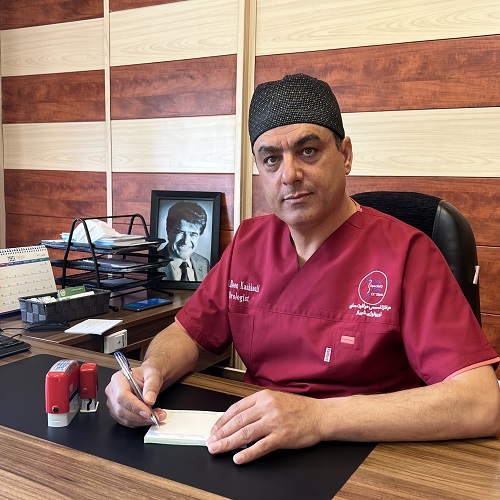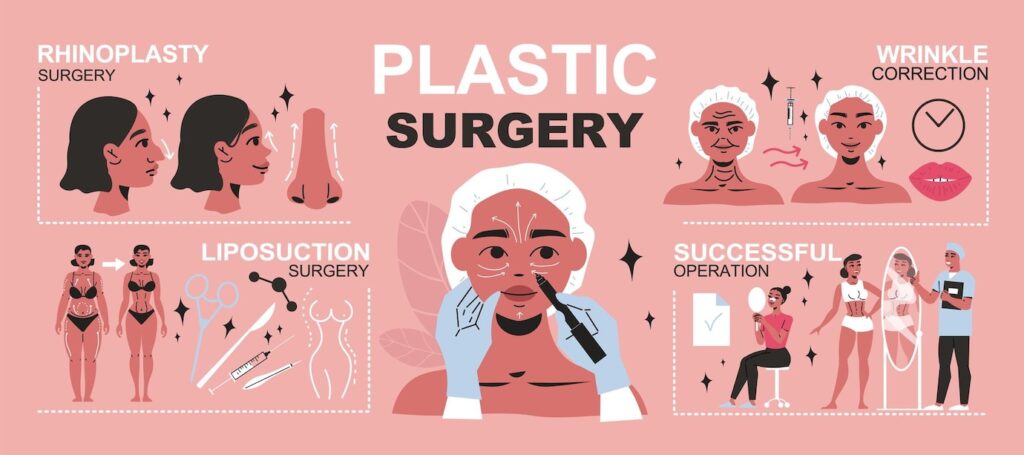Scar revision is plastic surgery performed to improve the condition or appearance of a scar anywhere on your body. Scar revision surgery will attempt to minimize a scar so that it is less conspicuous and blends in with the surrounding skin tone and texture.
Scars are visible signs that remain after a wound has healed. They are the unavoidable results of injury or surgery, and their development can be unpredictable. Poor healing may contribute to scars that are obvious, unsightly or disfiguring. Even a wound that heals well can result in a scar that affects your appearance. Scars may be noticeable due to their size, shape or location; they can also be raised or depressed, and may differ in color or texture from the surrounding healthy tissue.
Your treatment options may vary based on the type and degree of scarring and can include:
. Simple topical treatments
. Minimally invasive procedures
. Surgical revision with advanced techniques in wound closure
Although scar revision can provide a more pleasing cosmetic result or improve a scar that has healed poorly, a scar cannot be completely erased.
About Iranian Surgery
Iranian surgery is an online medical tourism platform where you can find the best surgeons in Iran. The price of Scar revision surgery in Iran can vary according to each individual’s case and will be determined based on photos and an in-person assessment with the doctor.
For more information about the cost of Scar revision surgery in Iran and to schedule an appointment in advance, you can contact Iranian Surgery consultants via WhatsApp number 0098 901 929 0946. This service is completely free.



Arrival: We meet at the airport, take you to your hotel, and after some rest, the first appointment with your surgeon, X-ray or scans.
Arrival: We meet at the airport, take you to your hotel, and after some rest, the first appointment with your surgeon, X-ray or scans.


Aftercare and resting time, take your medication and do nose drops.
You have all day to yourself (you can go shopping, sightseeing walking, etc)


You have all day to yourself (you can go shopping, sightseeing walking, etc)
You have all day to yourself (you can go shopping, sightseeing walking, etc)


Second visit with the Doctor, removing the stitches and receiving instructions.
Departure

Different Types of Scars
The different types of scars include:
. Discoloration or surface irregularities and other more subtle scars can be cosmetically improved by surgery or other treatments recommended by your plastic surgeon. These types of scars do not impair function or cause physical discomfort and include acne scars as well as scars resulting from minor injury and prior surgical incisions.
. Hypertropic scars are thick clusters of scar tissue that develop directly at a wound site. They are often raised, red and/or uncomfortable and may become wider over time. They can be hyperpigmented (darker in color) or hypopigmented (lighter in color).
. Keloids are larger than hypertropic scars. They can be painful or itchy, and may also pucker. They extend beyond the edges of an original wound or incision. Keloids can occur anywhere on your body, but they develop more commonly where there is little underlying fatty tissue, such as on the face, neck, ears, chest or shoulders.
. Contractures are scars that restrict movement due to skin and underlying tissue that pull together during healing. They can occur when there is a large amount of tissue loss, such as after a burn. Contractures also can form where a wound crosses a joint, restricting movement of the fingers, elbows, knees or neck.
The type of scar you have will determine the appropriate techniques your plastic surgeon will use to improve your scar.
Who is a good candidate for scar revision?
Scar revision is a highly individualized procedure and you should do it for yourself, not to fulfill someone else’s desires or to try to fit any sort of ideal image.
Scar revision can be performed on people of any age and is a good option for you if:
. You are bothered by a scar anywhere on your body
. You are physically healthy
. You do not smoke
. You have a positive outlook and realistic goals for your scar revision surgery
. You do not have active acne or other skin diseases in the area to be treated
What are the risks of scar revision?
The decision to have scar revision surgery is extremely personal and you’ll have to decide if the benefits will achieve your goals and if the risks and potential complications are acceptable. Your plastic surgeon and/or staff will explain in detail the risks associated with surgery.
You will be asked to sign consent forms to ensure that you fully understand the procedure you will undergo, the alternatives and the most likely risks and potential complications.
Scar revision risks include:
. Anesthesia risks
. Asymmetry
. Bleeding
. Deep vein thrombosis, cardiac and pulmonary complications
. Fatty tissue found deep in the skin might die (fat necrosis)
. Fluid accumulation (seroma)
. Hematoma
. Infection
. Numbness or other changes in skin sensation
. Persistent pain
. Poor healing of incisions
. Possibility of revisional surgery
. Recurrent looseness of skin
. Skin discoloration and/or prolonged swelling
. Skin loss
. Suboptimal aesthetic result
. Unfavorable scarring
Be sure to ask questions: It’s very important to ask your plastic surgeon questions about your procedure. It’s natural to feel some anxiety, whether it’s excitement for your anticipated new look or a bit of preoperative stress. Don’t be shy about discussing these feelings with your plastic surgeon.
How should I prepare for scar revision surgery?
Prior to scar revision surgery, you may be asked to:
. Get lab testing or a medical evaluation
. Take certain medications or adjust your current medications
. Stop smoking well in advance of surgery
. Avoid taking aspirin and certain anti-inflammatory drugs and herbal supplements as they can increase bleeding
Special instructions you receive will cover:
. What to do on the day of surgery
. The use of anesthesia during your procedure
. Post-operative care and follow-up
During Scar Revision Surgery
What are the steps of a scar revision procedure?
Step 1 – Anesthesia
Medications are administered for your comfort during the surgical procedures. The choices include local anesthesia, intravenous sedation and general anesthesia. Your doctor will recommend the best choice for you.
Step 2 – The treatment
The degree of improvement that can be achieved with scar revision will depend on the severity of your scarring, and the type, size and location of the scar. In some cases, a single technique may provide significant improvement. However, your plastic surgeon may recommend a combination of scar revision techniques to achieve the best results.
. Topical treatments, such as gels, tapes or external compression, can help in wound closure and healing, or to reduce the ability of skin to produce irregular pigment. These products may be used to treat existing surface scars and discoloration, and to aid in the healing of scar revision procedures.
. Injectable treatments may also be used. Dermal filler can be used to fill depressed or concave scars. Depending on the injectable substance used and your particular scar conditions, results may last from three months to several years. Therapy must be repeated to maintain results. Another form of injection therapy uses steroidal-based compounds to reduce collagen formation and can alter the appearance, size and texture of raised scar tissue.
. Surface treatments are most often used for cosmetic improvement of scars. These methods can soften surface irregularities and reduce uneven pigmentation. Surface treatments are a controlled means of either mechanically removing the top layers of skin or changing the nature of tissue. These treatment options include:
. Dermabrasion is a mechanical polishing of the skin.
. Laser or light therapy causes changes to the surface of the skin that allow new, healthy skin to form at the scar site.
. Chemical peel solutions penetrate the skin’s surface to soften irregularities in texture and color.
. Skin bleaching agents are medications applied topically to lighten the skin.
Step 3 – Sometimes for deeper scars an incision is needed to surgically remove the old scar
Step 4 – Closing the incisions
Some scars require layered closure. Layered closure is often used where excision extends to tissue below the skin surface or in areas with a high degree of movement. The first step, or layer, requires sub-dermal closure (below the skin surface) with absorbable or non-removable sutures. Layers of closure continue to build, concluding with closure of the remaining surface wound.
Advanced techniques in scar revision include complex flap closures and W-plasty or Z-plasty techniques. Flap closures may reposition a scar so that it is less conspicuous or improve flexibility where contracture has restricted mobility.
. Pharmaceutical tissue substitutes may be used if ample healthy tissue is not present for closure of a scar excision. This is more likely with revision of severe burn scars.
. Tissue expansion can be a substitute for skin grafts. In this procedure, an inflatable balloon called a tissue expander is placed under the skin near the scar site. Over time, the balloon is slowly filled with sterile solution to expand the area of healthy skin. Once the skin has been stretched sufficiently, the expander and the scar is removed and the stretched skin is moved to replace the scar tissue. This process can involve multiple surgical stages or procedures in order to achieve the final results.
After Scar Revision Surgery
What should I expect during my scar revision recovery?
Progress and healing
The initial healing phase of a surgical scar revision may include localized swelling, discoloration or discomfort and may take 1 to 2 weeks. Healing will continue for several weeks and as the new scar heals it will slowly refine and fade. With dermabrasion, chemical peel or laser resurfacing, you will experience similar conditions at the treated area, in addition to overall sensitivity.
When you go home
If you experience shortness of breath, chest pains or unusual heartbeats, seek medical attention immediately. Should any of these complications occur, you may require hospitalization and additional treatment.
Be careful
Following your physician’s instructions is key to the success of your surgery. It is important that the surgical incisions are not subjected to excessive force, abrasion or motion during the time of healing. Your doctor will give you specific instructions on how to care for yourself.
Follow all postoperative instructions carefully, including cleansing and at-home treatment regimens, and avoid sun exposure. Your cooperation will influence the outcome of your surgery.
The results will be long-lasting
The final results of your scar revision surgery will be long-lasting, however it may take several months for your final results to become apparent and in some cases it may take a year for the new scar to fully heal and fade.
The practice of medicine and surgery is not an exact science. Although good results are expected, there are no guarantees; and in some situations, it may not be possible to achieve optimal results with a single surgical procedure and another surgery may be necessary.
Source:
. https://www.plasticsurgery.org/reconstructive-procedures/scar-revision


